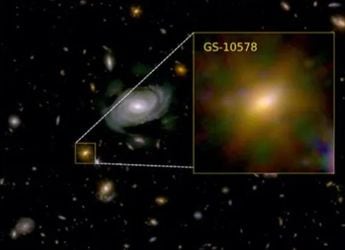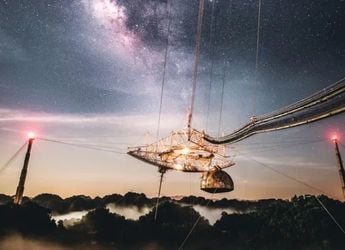- Home
- Science
- Science News
- Citizen Scientists Find Exoplanet Three Times the Size of Jupiter: NASA
Citizen Scientists Find Exoplanet Three Times the Size of Jupiter: NASA
Tom Jacobs, a former US naval officer from Washington state, was among those who participated in the project to find this exoplanet.

Photo Credit: NASA/JPL-Caltech/R. Hurt
This illustration depicts the Jupiter-like exoplanet called TOI-2180 b
Volunteers interested in astronomy and curious about celestial objects have helped NASA find a super giant planet outside our solar system. This exoplanet is three times the size of Jupiter and located about 379 light-years away from Earth. The super-Jupiter orbits a star with the same mass as our Sun.
NASA said this discovery was made possible by a group of “citizen scientists” who studied data from the agency's Transiting Exoplanet Survey Satellite (TESS). NASA regularly allows citizen scientists access to its telescope data so that they can explore and understand the world beyond the solar system.
Tom Jacobs, a former US naval officer from Washington state, was among those who participated in the project to find this exoplanet. NASA said the finding is significant as the exoplanet's 261-day year is long compared to many known gas giants outside the solar system. The exoplanet is just a bit farther from its star than Venus is from the Sun.
Hello, super-Jupiter!
— NASA Exoplanets (@NASAExoplanets) January 14, 2022
Citizen scientists spot a planet 379 light-years away that's three times more massive than the king of our solar system! https://t.co/LgBfatVHs9 pic.twitter.com/J8U7EMzKjA
“Discovering and publishing TOI-2180 b was a great group effort demonstrating that professional astronomers and seasoned citizen scientists can successfully work together,” Jacobs said. “It is synergy at its best.”
The discovery has been published in a paper in the Astronomical Journal. The lead author of the study, Paul Dalba, an astronomer at the University of California, said they engaged in a “global uniting effort” to track the exoplanet.
Scientists used the data from TESS to look for changes in the brightness of nearby stars, which could indicate the presence of orbiting planets. In February 2020, Jacobs' group, called the Visual Survey Group, which includes several citizen scientists and two veteran astronomers, noticed a plot showing starlight from TOI-2180 dim by less than half a percent and then return to its previous brightness level over a 24-hour period. The group alerted two professional scientist collaborators, who included Dalba.
When the James Webb Space Telescope is ready for observation, it will be able to see this planet and its atmosphere as well as look for the presence of small objects orbiting it.
Catch the latest from the Consumer Electronics Show on Gadgets 360, at our CES 2026 hub.
Related Stories
- Samsung Galaxy Unpacked 2025
- ChatGPT
- Redmi Note 14 Pro+
- iPhone 16
- Apple Vision Pro
- Oneplus 12
- OnePlus Nord CE 3 Lite 5G
- iPhone 13
- Xiaomi 14 Pro
- Oppo Find N3
- Tecno Spark Go (2023)
- Realme V30
- Best Phones Under 25000
- Samsung Galaxy S24 Series
- Cryptocurrency
- iQoo 12
- Samsung Galaxy S24 Ultra
- Giottus
- Samsung Galaxy Z Flip 5
- Apple 'Scary Fast'
- Housefull 5
- GoPro Hero 12 Black Review
- Invincible Season 2
- JioGlass
- HD Ready TV
- Laptop Under 50000
- Smartwatch Under 10000
- Latest Mobile Phones
- Compare Phones
- Samsung Galaxy A07 5G
- Vivo Y500i
- OnePlus Turbo 6V
- OnePlus Turbo 6
- Itel Zeno 20 Max
- OPPO Reno 15 Pro Mini 5G
- Poco M8 Pro 5G
- Motorola Signature
- Lenovo Yoga Slim 7x (2025)
- Lenovo Yoga Slim 7a
- Realme Pad 3
- OPPO Pad Air 5
- Garmin Quatix 8 Pro
- NoiseFit Pro 6R
- Acerpure Nitro Z Series 100-inch QLED TV
- Samsung 43 Inch LED Ultra HD (4K) Smart TV (UA43UE81AFULXL)
- Asus ROG Ally
- Nintendo Switch Lite
- Haier 1.6 Ton 5 Star Inverter Split AC (HSU19G-MZAID5BN-INV)
- Haier 1.6 Ton 5 Star Inverter Split AC (HSU19G-MZAIM5BN-INV)

















